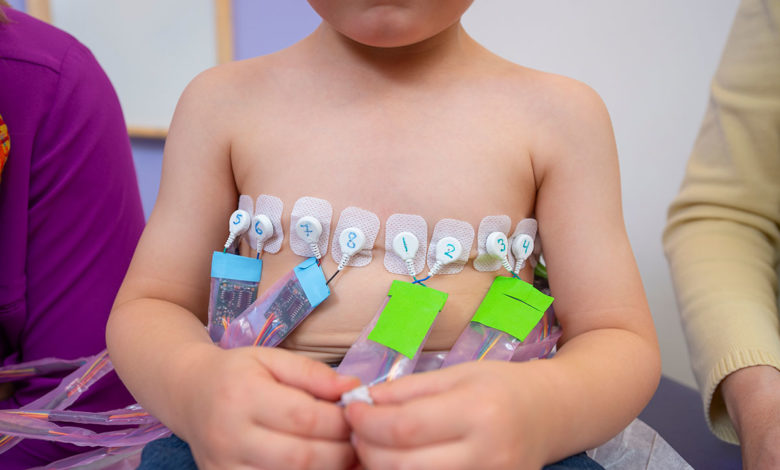


Noninvasive monitoring of maximuminspiratory and expiratory flows(MIF and MEF,respectively)using electrical impedance tomography(EIT)might enableearlier detection of changes inbreathing system mechanical characteristicsduetochanges in conditions orresponse totreatments.We sought to confirmEIT-basedmeasuresofMIFas well asMEF against spirometryof intubatedhypoxemic patients during controlled ventilationand breathing spontaneously.Moreover, regional distribution ofmaximum airflows may interact withlungpathologies and increasetherisk of additional ventilationinjury.We also wantedtodescribe the effectsofthe settings for mechanical ventilation onlocalMIFandMEF.
Methods
We performed a new analysisofdatafrom two prospective, randomized,cross-sectionalstudies.We included intubated patientsadmitted to theintensive care unit withthe condition of acute hypoxemic respiration(AHRF)or acute respiratory distress(ARDS)that were undergoing pressure-supportventilation(PSV, n10) andventilatory control(VCV, n20).We assessed MIF and MIFvia spirometry as well as EIT oversix different combinations of ventilation settings which were:highervs. lower supportduringPSVand higherthan. lowerpositive end-expiratory pressure(PEEP)throughoutbothPSV and VCV.The regional airflows were evaluated byEITin both dependent and non-dependentlung regions, too.
Results
MIF and impedanztomographie measuredthroughEIT werehighly correlated withthe results of spirometry inthe entire range of conditions(rangeofR2 0.629-0.776 and R2 0.606-0.772,respectively, p<0.05throughoutall) that was acceptable for clinicalranges of agree.Higher PEEP significantly improvedhomogeneity and consistency in thedistributionof MIF and MEFduring ventilation controlled by volumeby increasing airflows to theareas of the lung that are dependent and decreasingthem in non-dependent areas.
Conclusions
EITis a precise, noninvasive way to monitor the healthofMIFas well asMEF.The current study also positsthepossibilitythat EITcould guidePSV and PEEPset-upsat ensuring homogeneity whendistending and deflating regional airflows.
Introduction
Electronic impedance tomography(EIT)can be described asanon-invasive, bedside, radiation-free,active lung imaging technique. EITproduces maps of the intrathoraciclung impedance fluctuations that are referenced tothe baseline(i.e.that is the volume of your lung at the end of yourthe previousbreath) every20-50 ms ([11.Impedance changes within the intrathoracic area measuredusingEIT are linearlyrelated toregional and global tidal volume, and the correlation ismaintained as the positive end-expiratorypressure (PEEP) levels [2].This means thatEIToffers a noninvasive continuous bedsidemeasure of regionallung volumechanges betweeninspiratory and expiration.
Inspiratory and expiratory flows correspondto thespeed at whichlung volume fluctuationsintime.For patients intubated,they aretypically measured usingan spirometer connectedto the ventilator circuit prior tothetube for endotracheal intubation or withinthe ventilator.Global maximum inspiratory as well asexpiratoryflows(MIF and MEF respectively)measured bytraditional spirometry are dependent onwhat the physical characteristics of your respiratory system(namely lung compliance, lung volume andairway resistance) [33.Thus, monitoringMIF andMEF couldaid in guiding thebreathing settings(e.g. by choosingthepressure level positive associatedwithimprovedmechanics)or to assesstheeffectiveness of medications(e.g., increasedMIFand/or MEF afterbronchodilator drugs) [4The results of these tests are a good indication of the effectiveness of bronchodil.However, spirometry only yieldsgeneral measurements of MIF as well asMEF, while heterogeneous distributionofmodified lung mechanics is ahallmark of acute hypoxemic respiratoryinsufficiency(AHRF)and the acute respiratory distress disorder(ARDS) [5It is also a sign of ARDS.The damage to the alveoli causescollapse of lung cellsclose to normal-, partial- and over-inflated units and can causean imbalancebetween regionalMIFas well asMEF values.Such imbalances can increasethelikelihood of suffering from ventilator-induced pulmonary injury(VILI)through various mechanisms[6], and settingsto achieve more homogeneous regional flowsmight reduce it. Externalclassic spirometry sometimes leadstoaltered respiratory patterns as well asincorrect measurements,too[77.Therefore, a non-invasivebedsidedynamic method to measurethe global and regional MIF as well asMEFlevels couldbe a valuable addition inknowingAHRF and ARDSthe pathophysiology of patients andto aid in the development of personalized treatment.
In this study,after preliminary results obtained in ananimal models[8, 9], we soughttotest the validity ofan intubatedAHRFandARDS patientswho are receivingcontrolledventilation as well asEIT-based spontaneous breathing measures ofglobal MIF and EEF againststandardspirometry.Additionally, we investigatedtheeffects of higher. lowerPEEP andpressure supports on theregionalflows;our hypothesis isthat higherlevels of PEEPand lower pressure support mightgive a more homogenous distributionMIF andMIFandMEF.
Materials and methods
Studypopulation
We performed a new analysis of data collected during two prospective randomized crossover studies: in the first (pressure support ventilation (PSV) study) [9], ten intubated patients recovering from ARDS [10], lightly sedated (RASS – 2/0), undergoing PSV and admitted to the intensive care unit (ICU) of the university-affiliated San Gerardo Hospital, Monza, Italy, were enrolled; and in the second (volume-controlled ventilation (VCV) study) [11], twenty intubated, deeply sedated and paralyzed patients with AHRF (i.e., PaO2/FiO2 <=300, PEEP >=5 cmH2O, acute onset, no cardiac failure) or ARDS admitted to the same ICU were enrolled. Theethical committee ofSan Gerardo Hospital, Monza, Italy, approved thestudywhile informed consent was soughtfollowinglocalregulations.Additional information ontheinclusion and exclusion criteriaforbothresearch studies can be foundinthe online data supplement(Additionaldocument1.).
Demographic data collection
Wecollected data on sex, ages, Simplified Acute Physiology Score IIscores, etiology, diagnosis andseverityof ARDS days onmechanical ventilationprior the time of study enrollmentforeachpatient.The death rate at the hospital was documented,as well.
EIT andventilation monitoring
Ineach patient, EIT-dedicatedbelt,with 16 equallyspaced electrodes, was placedwithin the thorax, inthefifth or sixthintercostalarea and connected toan industrialEIT monitor (PulmoVista 500, Drager Medical GmbH, Lubeck, Germany).All study phases includedEITdata were generated bythe application of tinyelectrical currents that rotated around thean individual’s thorax. They were continuously recordedat 20 Hz and savedfor offline analysis, in accordance with the procedure previouslydescribed [12].Synchronized toEITtracings or airway pressures andairflows generated byventurism werecontinuously recorded.
Interventions
More information aboutthe two protocolsare availablein theonline data supplement(Additionaldata supplement file1.).
InThePSV study,patients had to undergothe followingrandomized steps in a crossover that lasted for 20 minutes each:
- 1.
Low support at clinical PEEP(PSV low)contrasts with.more support atclinical PEEP(PSV high);
- 2.
Clinical supportforlower PEEP(PSV-PEEP low)against.Clinical support when PEEP is higher(PSV-PEEP high).
For theVCV study,insteadthe following phaseswere performedin a randomized order of crossovers,each lastingfor 20 minutes:
- 1.
Protection VCV in low-PEEP(VCV-PEEP low)as compared to.VCV to protect at clinicalPEEPplus 5cmH 2O (VCV-PEEP high).
EIT andventilation data
Through offline analysis ofEITtraced duringthefinal minuteat the end of every phase(analysis oftenbreaths), we measuredlocal and global(same-sizeof non-dependent and dependent regions in the lung) noninvasive airflows’ waveforms,like the ones previously reported[8].Briefly, instantaneous global andregionalexpiratory and inspiratoryairflowswere measured asvariationsof global and regionalimpedance , which was measured every 50 ms, multiplied by the tidalintensity ratio forthesame study phase , anddivided by 50ms. EIT airflow data werethen converted toL/min (Fig. 1), and the maximumEIT-derived global and regional MIFand MEF (MIFglob MIFglob, MIFnondepand MIFdep;MEFglob as well as MEFnondep andMEFdep, respectively) wereidentified and thevalues were averaged over5-10breathingcycles.



